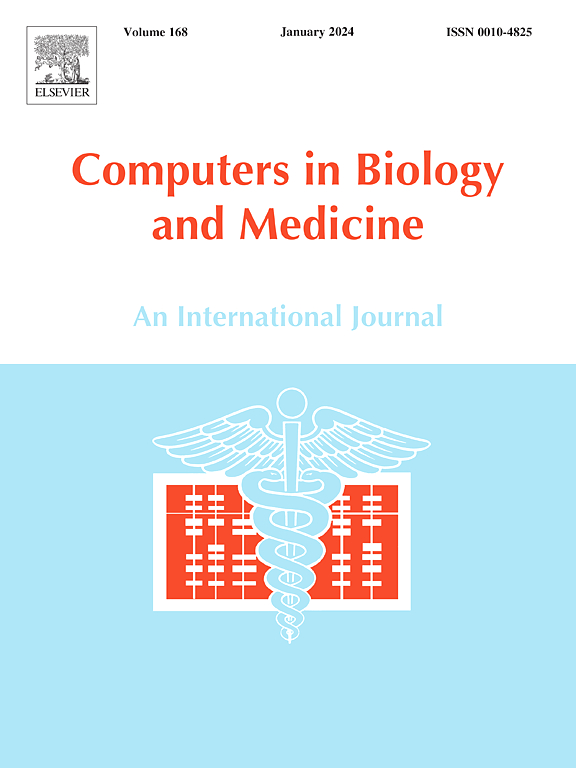Diabetic retinopathy detection from fundus images: A wide survey from grading to segmentation of lesions
IF 7
2区 医学
Q1 BIOLOGY
引用次数: 0
Abstract
Diabetes is one of the most common diseases worldwide and requires accurate diagnosis. Patients with diabetes are often affected by diabetic retinopathy (DR), which can lead to low vision, vision loss, or blindness. Therefore, a robust computer-aided diagnosis system is needed to provide better treatment to patients. This review mainly focuses on the works related to diagnosing DR from retinal fundus images. A total of 128 research papers have been reviewed from 1986 to 2025. The survey is divided into two parts: one for the grading/classification of DR and the other for DR lesions segmentation. This survey article introduces the details of eye diseases, followed by the background details of DR and different imaging techniques required to diagnose DR, like fundus imaging, multifocal electroretinogram, and optical coherence tomography. Details of well-known DR datasets since 2009 are also provided, including their complete statistical information and potential dataset biases. Furthermore, the approaches used for grading and segmentation tasks from the early 1980s to recent developments are discussed. The reviewed papers are based on traditional and deep learning based methods used in DR diagnosis. In traditional methods, the researchers used image preprocessing, mathematical morphology, fuzzy system, active contour, features extraction methods, evolutionary approaches, and machine learning based classifiers. In deep learning, researchers have used convolutional neural network (CNN), long short-term memory, vision transformer, contrastive learning, federated learning, and Explainable Artificial Intelligence (XAI) based approaches for diagnosis. In this article, we have emphasized almost all the significant work done in diagnosing DR disease, the datasets used, and performance of methods on those datasets. The comparative analysis of the methods is also done to help researchers obtain future directions for further research in the area of medical disease identification, especially DR disease detection. The challenges of AI and its associated ethical implications are also discussed in the article to provide direction for future work.
从眼底图像检测糖尿病视网膜病变:从病变分级到分割的广泛研究
糖尿病是世界上最常见的疾病之一,需要准确的诊断。糖尿病患者经常受到糖尿病视网膜病变(DR)的影响,这可能导致视力低下、视力丧失或失明。因此,需要一个强大的计算机辅助诊断系统来为患者提供更好的治疗。本文主要就视网膜眼底图像诊断DR的相关工作进行综述。1986年至2025年共评审研究论文128篇。调查分为两部分:一部分是DR的分级/分类,另一部分是DR病变的分割。这篇综述文章介绍了眼病的细节,然后介绍了DR的背景细节和诊断DR所需的不同成像技术,如眼底成像、多焦视网膜电图和光学相干断层扫描。还提供了2009年以来知名DR数据集的详细信息,包括完整的统计信息和潜在的数据偏差。此外,还讨论了从1980年代初到最近的发展中用于分级和分割任务的方法。综述的论文是基于传统的和基于深度学习的DR诊断方法。在传统方法中,研究人员使用图像预处理、数学形态学、模糊系统、活动轮廓、特征提取方法、进化方法和基于机器学习的分类器。在深度学习中,研究人员使用了卷积神经网络(CNN)、长短期记忆、视觉转换、对比学习、联邦学习和基于可解释人工智能(XAI)的诊断方法。在本文中,我们强调了几乎所有在诊断DR疾病方面所做的重要工作、使用的数据集以及在这些数据集上的方法的性能。对这些方法进行对比分析,也有助于研究人员在医学疾病识别特别是DR疾病检测领域获得未来的进一步研究方向。文章还讨论了人工智能的挑战及其相关的伦理影响,为未来的工作提供方向。
本文章由计算机程序翻译,如有差异,请以英文原文为准。
求助全文
约1分钟内获得全文
求助全文
来源期刊

Computers in biology and medicine
工程技术-工程:生物医学
CiteScore
11.70
自引率
10.40%
发文量
1086
审稿时长
74 days
期刊介绍:
Computers in Biology and Medicine is an international forum for sharing groundbreaking advancements in the use of computers in bioscience and medicine. This journal serves as a medium for communicating essential research, instruction, ideas, and information regarding the rapidly evolving field of computer applications in these domains. By encouraging the exchange of knowledge, we aim to facilitate progress and innovation in the utilization of computers in biology and medicine.
 求助内容:
求助内容: 应助结果提醒方式:
应助结果提醒方式:


